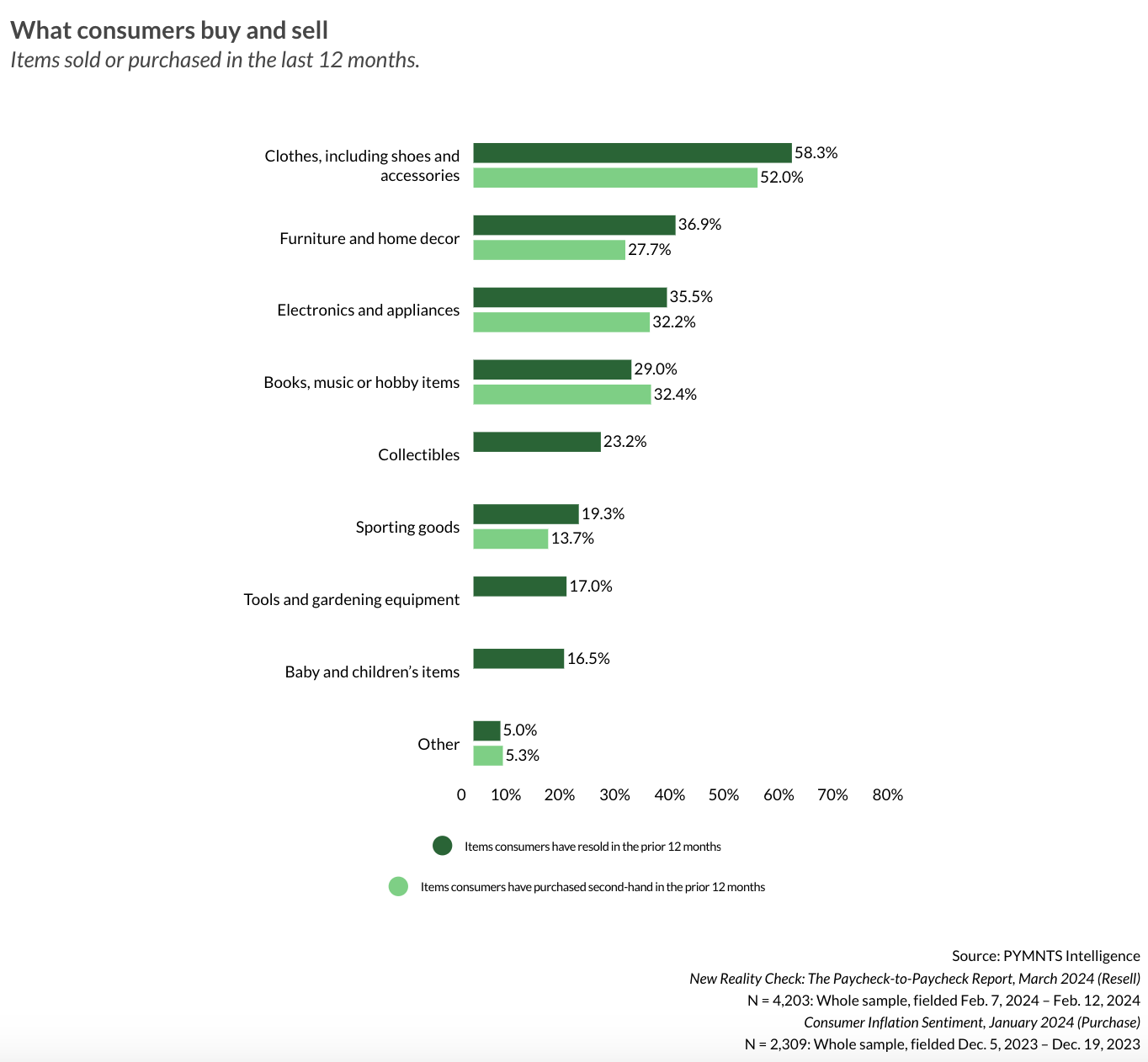58% of US Consumers Sell Used Clothes to Earn Extra Money

In the latest edition of “The Paycheck-to-Paycheck Report: High-Income Consumers Lead Surprising New Data on Side Hustles,” PYMNTS Intelligence explored a variety of methods U.S. consumers pursue to pick up a little extra cash.
For some, doing so is a necessity. Fifty-nine percent of U.S. consumers live paycheck to paycheck, including 42% of those earning more than $100,000 per year, and supplemental income can smooth these consumers’ cash flows.
But side jobs aren’t always about relieving financial stress. Ease of access to funds and simple enjoyment are two common reasons consumers cited for having side hustles. Also, the odds of having a side gig correlate more with age than financial woes. For instance, Generation Z consumers are the most likely to receive any kind of side income.
Selling used goods is an especially popular and accessible way to earn extra cash. Thirty-one percent of all consumers surveyed told us they have sold at least one used item in the last 12 months, and more than four in 10 bought a used item during the same period.
Gen Z is the most likely to be involved in both selling and buying used goods. Forty-seven percent of Gen Z respondents said they have sold secondhand goods, while 74% have bought used items. When taking age out of the picture and looking only at paycheck-to-paycheck consumers who struggle to pay bills, those shares drop to 37% selling and 49% buying such items.

So, what’s being sold and what’s being bought?
As exclusive findings that were not included in PYMNTS Intelligence’s original report show, clothing tops both lists. Fifty-eight percent of respondents sold clothing items in the last year, while 52% purchased recycled apparel.
Furniture and home decor items were sold by 37% of consumers and electronic items and appliances were sold by 36%. The only secondhand merchandise where buyers outnumbered sellers were books, music and hobby items, with 32% consumers buying the items, while only 29% were willing to part with them.
Interestingly, 23% of consumers sold collectibles, 17% sold tools and gardening equipment and 16.5% sold baby and children’s items; however, in each case, no respondents reported purchasing any of the items, suggesting people prefer new tools and baby clothes, and what is truly a collectable is in the eye of the beholder.

